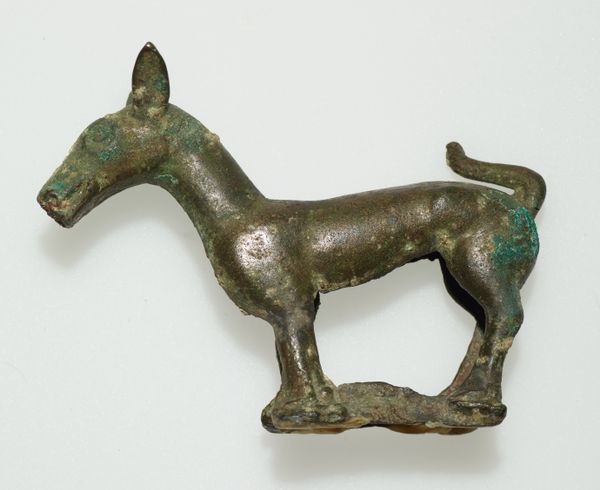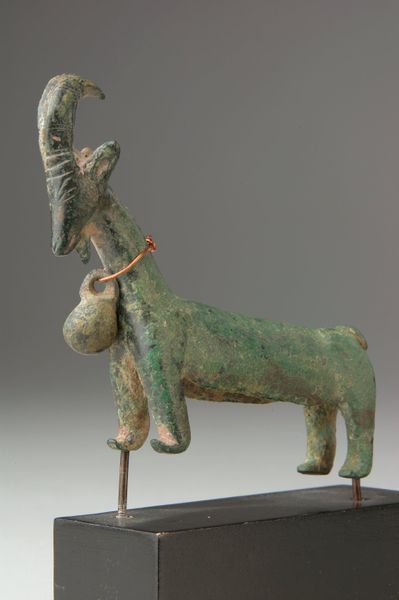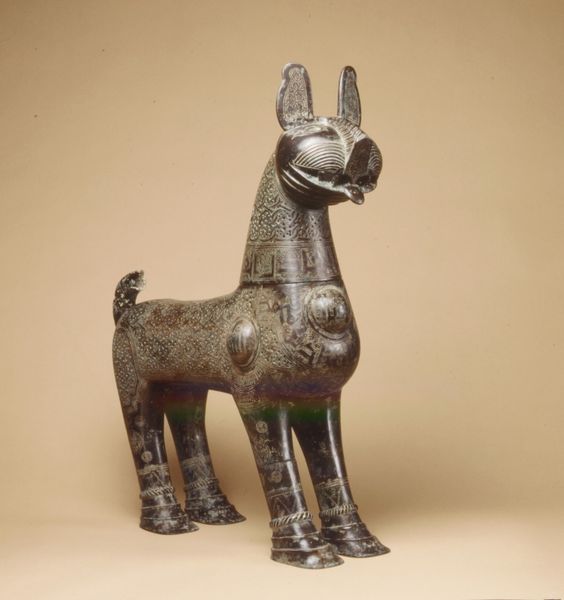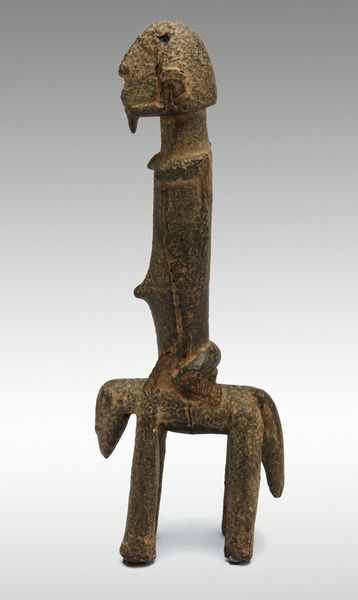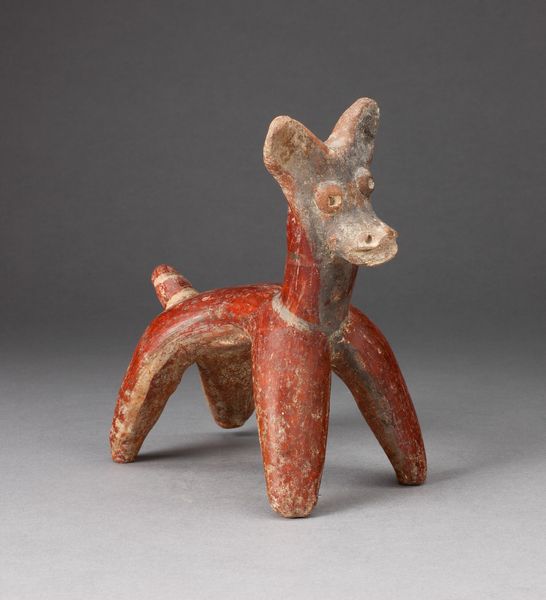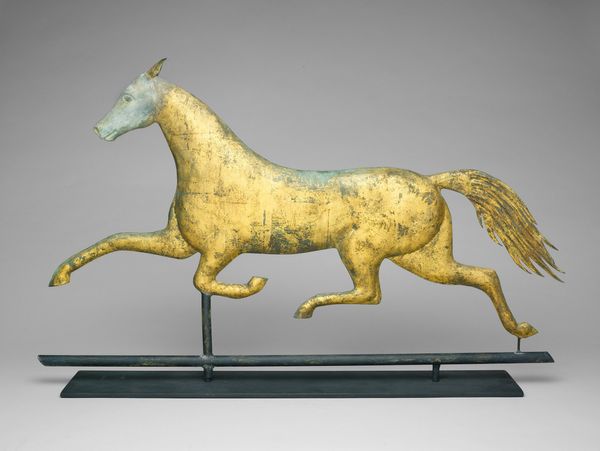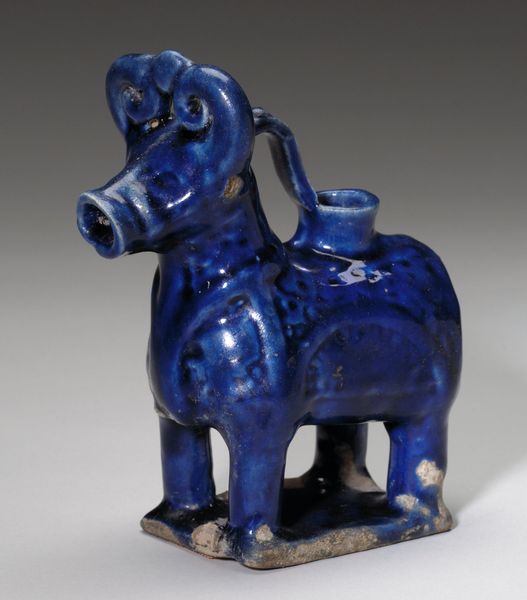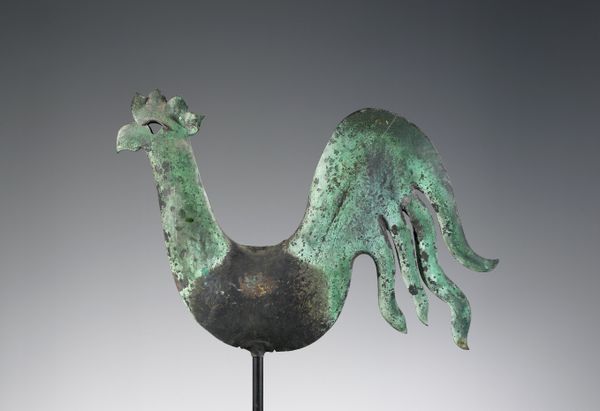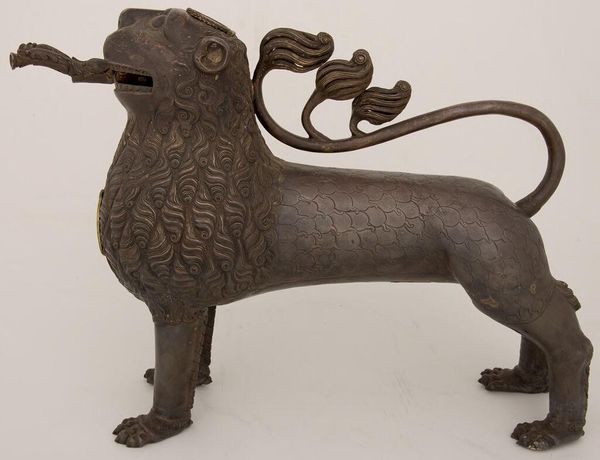
bronze, sculpture
#
animal
#
sculpture
#
bronze
#
figuration
#
ancient-mediterranean
#
sculpture
Dimensions: 3 5/16 × 5 1/4 × 1 5/8 in., 0.4 lb. (8.41 × 13.34 × 4.13 cm, 0.2 kg)
Copyright: Public Domain
Editor: So, this is the bronze sculpture "Dog," dating back to around 206-220, from the Ordos culture. I’m struck by its stillness; it feels like it's been watching and waiting for centuries. What can you tell me about it? Curator: That sense of watchful stillness is fascinating, especially when we consider the potential role dogs played in Ordos society. Dogs weren't just pets, but active participants in nomadic life, integral to hunting and guarding. Can we therefore consider how this small statue could embody power relationships in Ordos society? Editor: Power relationships? How so? Curator: Well, consider this. Dogs, loyal and subservient, served a vital purpose, reflecting and reinforcing a hierarchical structure within the community. Its very presence hints at the intersection of human control and the natural world, perhaps symbolizing authority and status. Does that change your perception? Editor: Definitely. It shifts it from a simple depiction of an animal to a statement about societal roles and the control of nature. It's like the sculpture itself is a little piece of propaganda! Curator: Precisely. This wasn’t simply art for art's sake, but imbued with meaning relevant to their everyday lives. Understanding that historical context, even with something as seemingly simple as a dog figurine, really opens up a broader conversation. What did you learn from this dialogue? Editor: That approaching art with a critical eye toward its societal context allows a better grasp of what it stood for and still stands for today. Curator: It encourages a deeper reading, which I believe, moves us beyond aesthetic appreciation and into the complex narratives of the past.
Comments
No comments
Be the first to comment and join the conversation on the ultimate creative platform.
